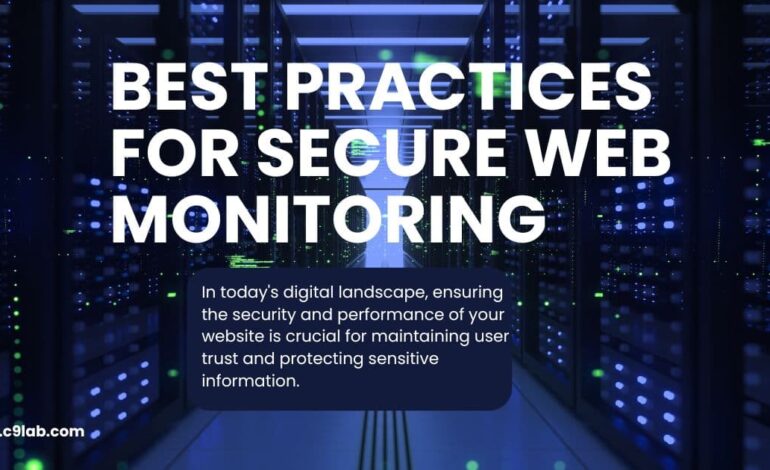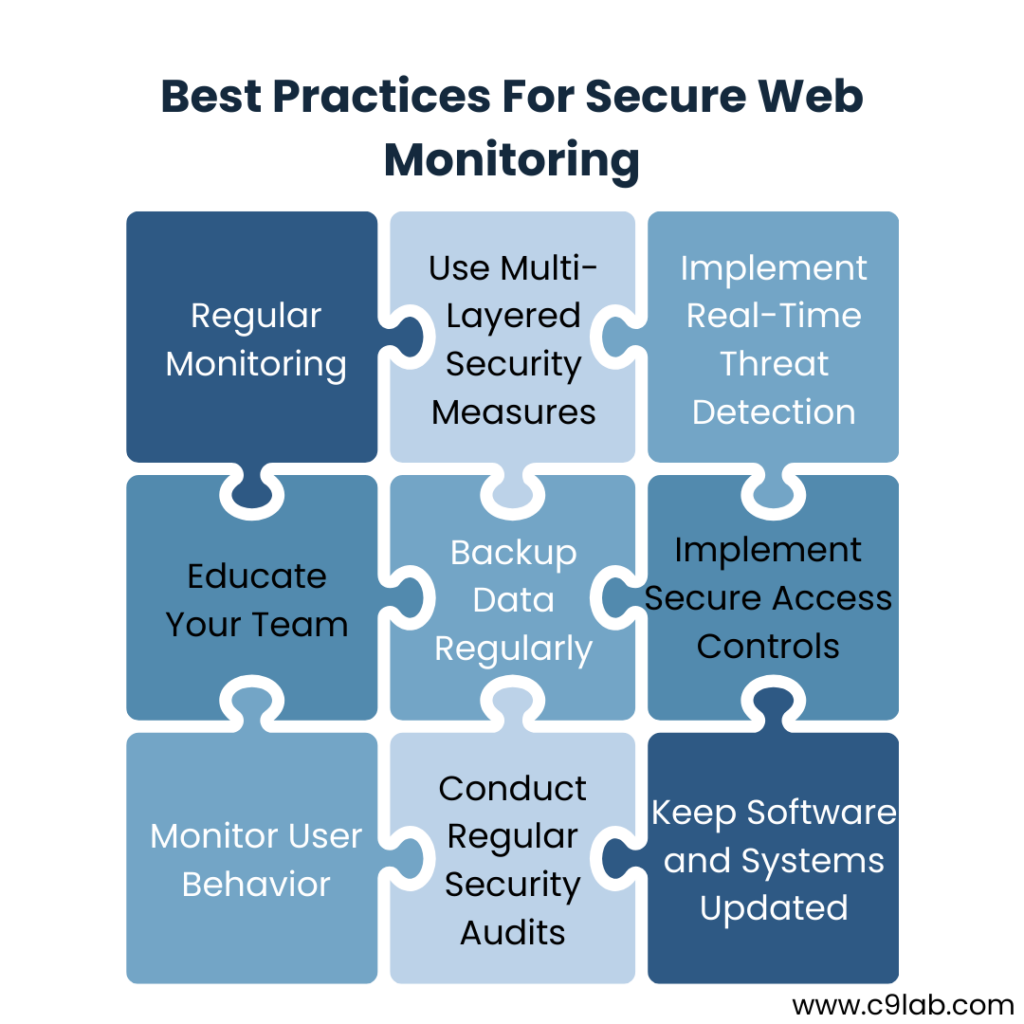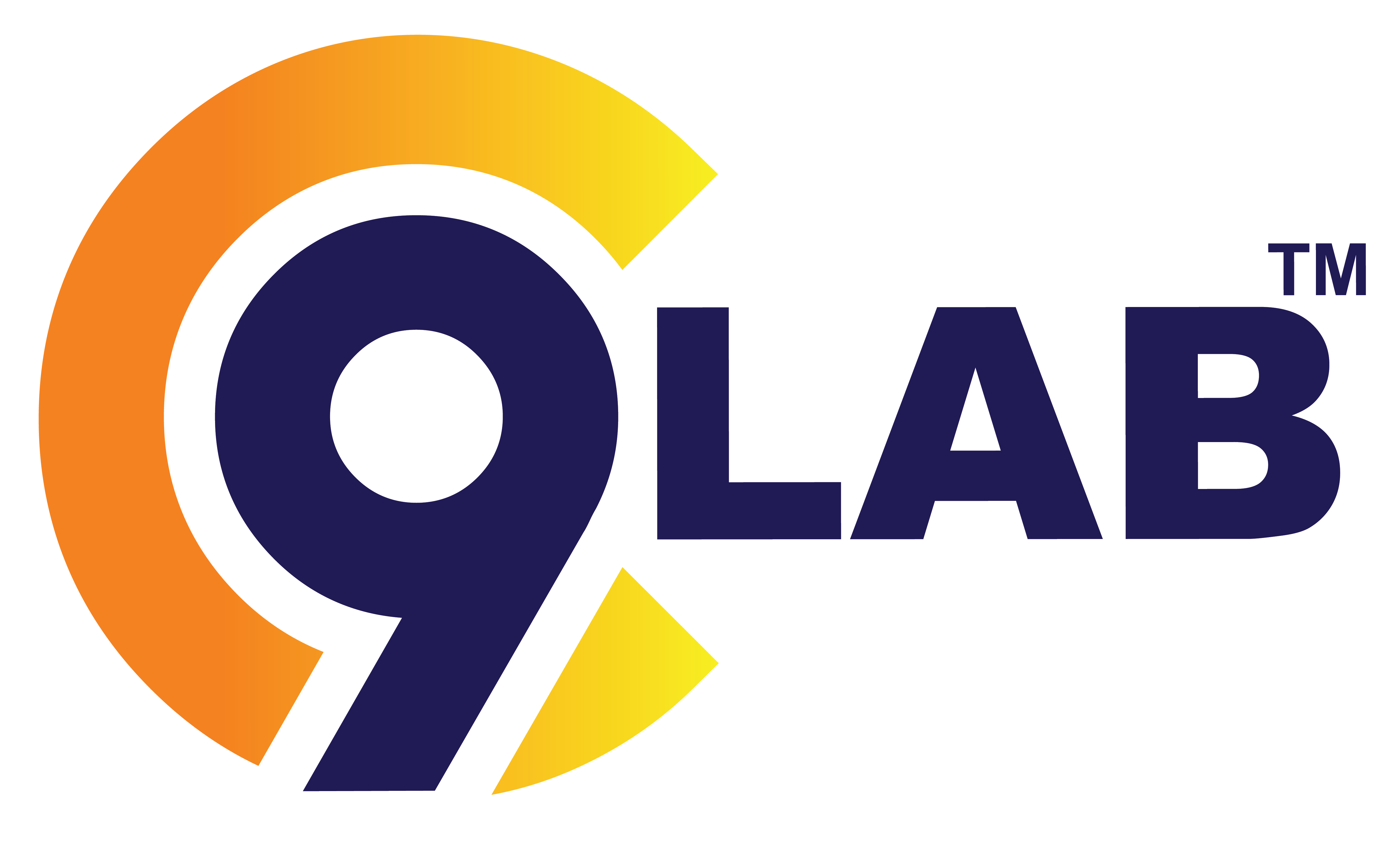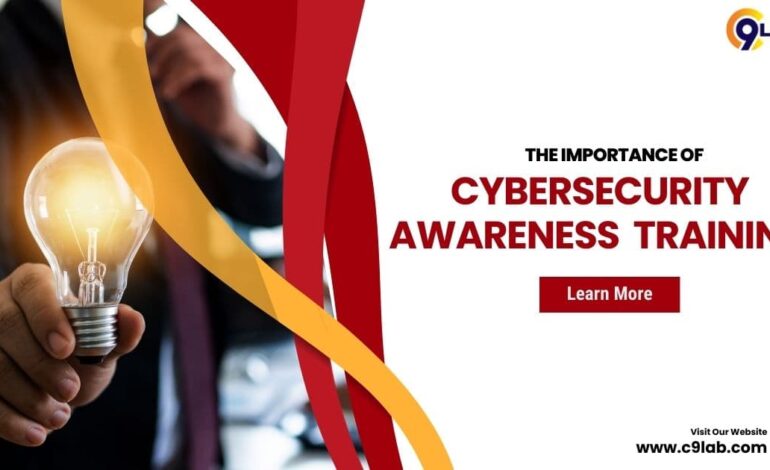
Best Practices for Secure Web Monitoring
In today’s digital landscape, ensuring the security and performance of your website is crucial for maintaining user trust and protecting sensitive information. Implementing secure web monitoring best practices helps you identify and mitigate potential threats before they become serious issues. This guide covers the essential best practices for web monitoring security and provides insights into how to monitor website security effectively.

Types of Web Monitoring
Effective web monitoring encompasses several types of web monitoring, each addressing different aspects of a website’s operation and security:
- Uptime Monitoring: Ensures that your website is accessible to users at all times. Downtime can harm your reputation and lead to lost business.
- Performance Monitoring: Tracks load times, server response, and other factors that impact user experience.
- Security Monitoring: Guards against unauthorized access, malware, and vulnerabilities.
- SEO Monitoring: Ensures that your rankings and visibility remain stable across search engines.
- User Activity Monitoring: Observes user behavior to detect unusual or suspicious activities that may indicate security threats.
Essential Best Practices for Secure Web Monitoring
1. Regularly Web Monitoring
Regular web monitoring of your website’s performance is key to ensuring that it remains fast, responsive, and secure. Slow loading times and downtime can lead to a poor user experience and increased vulnerability to cyberattacks.
Tip: Use web performance monitoring tools to track your website’s uptime, latency, and loading speeds. Regularly analyze this data to identify and resolve performance issues promptly.
2. Implement Real-Time Threat Detection
Real-time threat detection within your web monitoring strategy allows you to identify and respond to security threats as they occur. This proactive approach helps prevent data breaches and minimizes the impact of cyberattacks.
Tip: Deploy a comprehensive web monitoring solution like C9Eye, which offers real-time threat detection and performance monitoring to keep your digital assets secure and optimized.
3. Use Multi-Layered Security Measures
Implementing multi-layered security measures within your web monitoring framework provides robust defense against various cyber threats. This includes firewalls, intrusion detection systems, and encryption.
Tip: Ensure that your web monitoring tools integrate seamlessly with your security infrastructure to provide comprehensive protection.
4. Conduct Regular Security Audits
Regular security audits are an integral part of web monitoring. They help identify vulnerabilities and ensure that your security measures are effective. These audits should include a thorough review of your website’s code, configurations, and access controls.
Tip: Schedule periodic web monitoring audits and use automated scanning tools to detect and fix vulnerabilities.
5. Monitor User Behavior
Monitoring user behavior is a crucial aspect of web monitoring, as it can help you detect unusual or suspicious activities that may indicate a security threat.
Tip: Use behavior analytics tools to monitor and analyze user activity. Implement alerts for suspicious patterns to respond quickly to potential threats.
6. Keep Software and Systems Updated
Regularly updating your software and systems is essential to protect against known vulnerabilities. Cybercriminals often exploit outdated software to gain unauthorized access to your website.
Tip: Enable automatic updates for your content management system (CMS), plugins, and other software. Regularly check for and install security patches.
7. Implement Secure Access Controls
Limiting access to your website’s administrative functions and sensitive data reduces the risk of unauthorized access. Use strong passwords, multi-factor authentication (MFA), and role-based access controls.
Tip: Regularly review and update access permissions to ensure that only authorized personnel have access to critical functions and data.
8. Backup Data Regularly
Regular data backups are essential for recovery in case of a security breach or data loss. Ensure that your backups are stored securely and tested periodically to ensure they can be restored when needed.
Tip: Implement an automated backup solution and schedule regular backups. Store backups offsite or in a secure cloud environment.
9. Educate Your Team
Human error is a common cause of security breaches. Educating your team on web monitoring best practices and cybersecurity is crucial for a secure website.
Tip: Conduct regular training sessions on cybersecurity awareness and web monitoring strategies, tailored to your team’s needs.
Benefits of Web Monitoring
Implementing regular web monitoring practices provides a multitude of benefits that not only enhance the security and performance of your website but also contribute to overall business success. Here are the key advantages of effective web monitoring:
1. Improved Security
One of the primary benefits of web monitoring is its ability to significantly enhance your website’s security posture. By continuously monitoring your site for vulnerabilities, unusual activity, and potential threats, you can detect and mitigate risks early. This proactive approach helps protect against data breaches, malware infections, and cyberattacks, safeguarding sensitive user information and maintaining your organization’s reputation.
2. Enhanced User Trust
A fast, reliable, and secure website fosters trust and confidence among users. When visitors experience quick loading times and secure transactions, they are more likely to return to your site and recommend it to others. Web monitoring ensures that your website operates smoothly, which not only improves user satisfaction but also enhances your brand’s credibility in a competitive digital landscape.
3. Regulatory Compliance
In today’s data-driven world, compliance with industry standards and regulations is more critical than ever. Web monitoring plays a vital role in maintaining compliance with regulations such as the General Data Protection Regulation (GDPR) and the California Consumer Privacy Act (CCPA). By regularly monitoring data handling practices and ensuring security measures are in place, organizations can avoid hefty fines and legal repercussions while demonstrating their commitment to protecting user privacy.
4. Operational Efficiency
Effective web monitoring contributes to operational efficiency by minimizing downtime and optimizing performance. Continuous monitoring allows for the identification of issues before they escalate into significant problems, ensuring that your website runs smoothly and efficiently. This not only enhances the overall user experience but also reduces the likelihood of lost revenue due to website outages or slow performance.
Checklist for Secure Web Monitoring
To effectively implement secure web monitoring practices, use the following checklist to safeguard your digital assets and enhance user experience:
1. Conduct Regular Performance Testing
Regularly assess your website’s loading speeds and uptime using performance monitoring tools. This helps identify and resolve issues that could impact user experience and search rankings.
2. Set Up Real-Time Alerts
Configure real-time alerts for unusual activities, such as failed login attempts or downtime. Immediate notifications enable swift responses to potential security threats.
3. Conduct Periodic Security Audits
Schedule regular security audits to evaluate your site’s code, configurations, and access controls. Identifying vulnerabilities ensures robust protection against cyber threats.
4. Verify Multi-Layer Security Measures
Ensure your multi-layer security measures, including firewalls and encryption, are functioning effectively. Regular updates and tests keep your defenses strong against emerging threats.
5. Schedule Regular Backups
Implement a backup strategy by scheduling regular automated backups stored securely. Test restoration processes to ensure quick recovery from data loss or breaches.
Advanced Tools for Web Monitoring
Choosing the right tools is crucial for effective web monitoring. Here are some top solutions:
Sucuri: Known for its robust security features, Sucuri offers malware removal, DDoS protection, and security monitoring.
Pingdom: A leading choice for performance monitoring, Pingdom provides insights into load times, uptime, and user experience.
Site24x7: A comprehensive monitoring tool offering real-time alerts, performance tracking, and user experience insights.
C9Eye: An all-in-one monitoring solution and best of them, C9Eye developed by C9Lab provides real-time threat detection, performance monitoring, and optimization tools to help keep your website secure and efficient.
FAQs
1. What are the key components of secure web monitoring?
Key components of secure web monitoring include performance monitoring, real-time threat detection, regular security audits, user behavior monitoring, and keeping software updated.
2. How can I implement multi-layered security measures?
Implement multi-layered security measures by using firewalls, intrusion detection systems, encryption, and secure access controls. Ensure these measures work together seamlessly.
3. Why is regular data backup important for web monitoring?
Regular data backup is important because it ensures that you can quickly recover your data in case of a security breach or data loss, minimizing downtime and data loss.
4. How does user behavior monitoring enhance website security?
User behavior monitoring helps detect unusual or suspicious activities that may indicate a security threat, allowing you to respond quickly and prevent potential breaches.
5. What role does C9Eye play in secure web monitoring?
C9Eye offers comprehensive performance and vulnerability monitoring, real-time threat detection, and optimization tools to keep your website secure and efficient.
Conclusion
Implementing these web monitoring best practices is essential for maintaining the security and performance of your website. Regular performance monitoring, real-time threat detection, multi-layered security measures, and user behavior monitoring are critical components of a robust web monitoring strategy.
Incorporating tools like C9Eye for comprehensive monitoring and C9Phish for employee training can further enhance your website’s security posture. Stay proactive, keep your systems updated, and prioritize secure web monitoring to protect your digital assets effectively.





